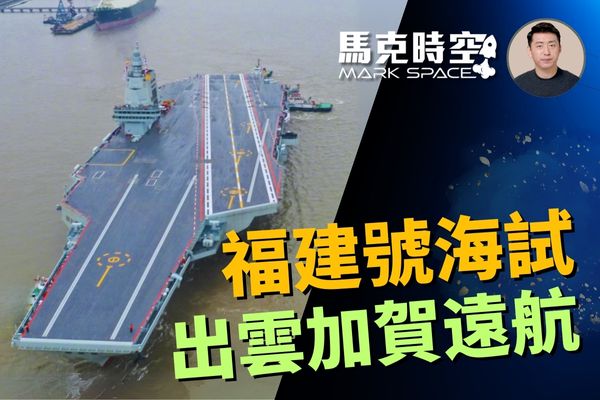On May 1st, the third aircraft carrier of the Chinese Communist Party, the Fujian, left the dock of the Jiangnan Shipyard in Shanghai and began its first sea trial. The Fujian is the first catapult-type aircraft carrier of the Chinese Communist Party, breaking away from the design concept of Soviet aircraft carriers and adopting a design philosophy similar to that of American carriers, incorporating a flat deck and an electromagnetic catapult. The first sea trial of the Fujian took place in the East China Sea area near the mouth of the Yangtze River and lasted around 9 days.
Around the same time, the Japanese Maritime Self-Defense Force’s “quasi-carriers,” the Izumo and Kaga, began a six-month long deployment on May 3rd, leading a fleet of four warships and participating in joint exercises with multiple countries. This marks the first time the Maritime Self-Defense Force has deployed such a large fleet for an extended period, showcasing the long-term deployment capability of the Izumo-class carriers and demonstrating Japan’s long-range operational capabilities.
The Fujian is the Chinese Communist Party’s first aircraft carrier designed and constructed according to Western standards with a flat flight deck and catapult system, a departure from the design concepts of its predecessors, the Liaoning and Shandong. However, the Fujian still incorporates many design elements from the Shandong.
Regarding its power system, the Chinese Communist Party has not disclosed any information on whether it is conventionally powered or nuclear-powered. However, media speculation suggests that it is steam turbine-powered, generating steam using boilers, a design similar to the Liaoning and Shandong.
The Fujian features a flat inclined flight deck with three catapults, two at the bow and one on the angled deck. It has two aircraft elevators located on the starboard side, one forward and one aft of the island, similar to the layout of the Liaoning and Shandong, integrated with the flight deck instead of being positioned entirely on the outer edge, thereby occupying part of the flight deck.
The Shandong took 1 year and 7 months from its first sea trial to official commissioning, while the Fujian’s systems are more complex than those of the Shandong and Liaoning, indicating that it will likely require more time for testing and adjustments. Typically, a carrier completes sea trials without significant design or technical issues within 1 to 2 years, but this timeline does not account for fleet testing and other operational processes. It is estimated that the Fujian will be formally commissioned no earlier than 2026 at the soonest, unless political considerations necessitate an earlier commissioning, followed by further testing and adjustments.
Video Content:
– Mark Space Clean World Channel: [link]
– Mark Space Facebook Fan Page: [link]
– Mark Space Instagram: [link]
– Mark Space Telegram Group: [link]
– Mark Space Production Team

